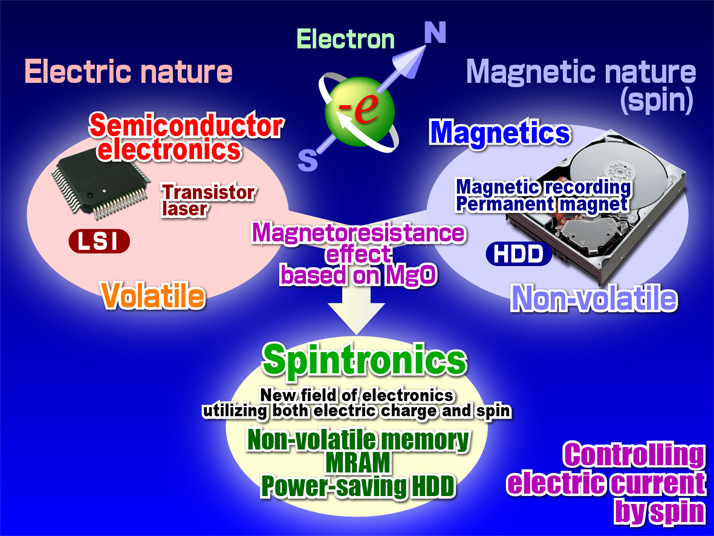Spintronics: For Future Eco-IT Devices with Ultra-low Power Consumption

"Spintronics" is a new field of electronics, in which both the electric nature (charge) and magnetic nature (spin) of electrons are utilized to create novel electronic devices. The magnetoresistance effect of MgO-based magnetic tunnel junctions (MTJ), which was originally developed by AIST and is the core technology for spintronics today, is widely used in the magnetic heads of hard disk drives (HDDs). Moreover, AIST is developing a novel non-volatile memory "MRAM" for future eco-IT devices with ultra-low power consumption.
Existing semiconductor electronic devices, which use the charge of electrons and are the basis of LSI technology, are basically "volatile" (i.e., recorded data is erased when the power is turned off). Magnetic recording based on the spin of electrons is inherently "non-volatile" (i.e., memory is retained even when the power is turned off). "Spintronics", a new field of electronics that utilizes both charge and spin, is the key for future eco-IT devices such as non-volatile memory MRAM and ultrahigh-density HDDs. Spintronics utilizes the magnetoresistance effect, which is a quantum mechanical interaction between charge and spin. In 2004, AIST developed an innovative MgO-based MTJ that exhibits a giant tunneling magnetoresistance effect, which is the core technology for spintronics today. HDDs with large capacity and low power consumption, which depend on this technology, are indispensable for cloud computing and modern IT society. AIST is now developing large-capacity MRAM with ultra-low power consumption to help create a sustainable eco-IT society in the future.